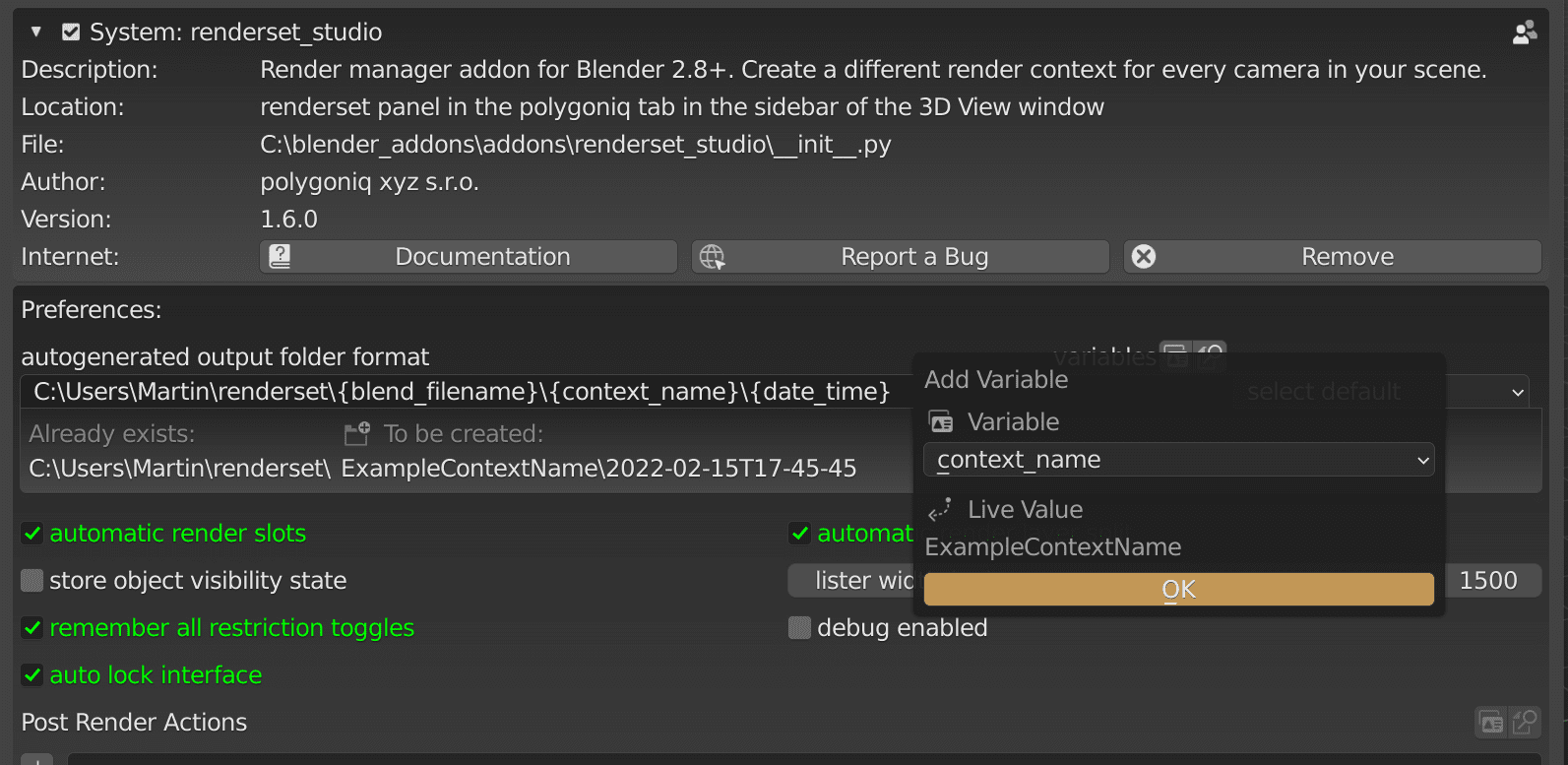Output Path Format¶
renderset uses a special string format to generate paths. This lets you generate paths that fit
your production workflow from variables related to your computer, the blend file, the scene, the
context and more.
This string format is used by three features in renderset Preferences:
- Output Folder Path
- Output Filenames
- Copy Output File Post Render Action
General Philosophy¶
The syntax uses Python's
formatted string literals.
Anything enclosed within curly braces is treated as a variable. renderset feeds a controlled list of
variables and python replaces their tokens with their values.
Let us look at a few examples:
use hostname and context name to form a path
C:/SomeFolder/{hostname}/{context_name}
results in:
C:/SomeFolder/MY_COMPUTER_NAME/ContextName/
put renders into folders by month
/home/linux_user/renders/{month}/{blend_filename}
results in:
/home/linux_user/renders/11/BlendFilename.blend/
Variables¶
The following variables are available:
context_name: Name of the rendered contextcontext_render_type: Type of render (still or animation)blend_parent_folder: Parent folder of current Blend file locationblend_filename: Name of current Blend fileblend_full_path: Full path to Blend filehostname: Hostname of the machine that is renderingdate_time: Date and time in format: YYYY-MM-DDTHH-MM-SSframe_current: Current frame of the animation,frame_start: Start frame of the animation,frame_end: End frame of the animation,frame_step: Step between frames of the animation,camera: Camera assigned to the contextworld: World assigned to the contextyearmonthdayhourminutesecond
When constructing the folder path string, consider using the Add Variable and Peek Variables
operators for help. You can find them in Preferences → Addons → renderset.

